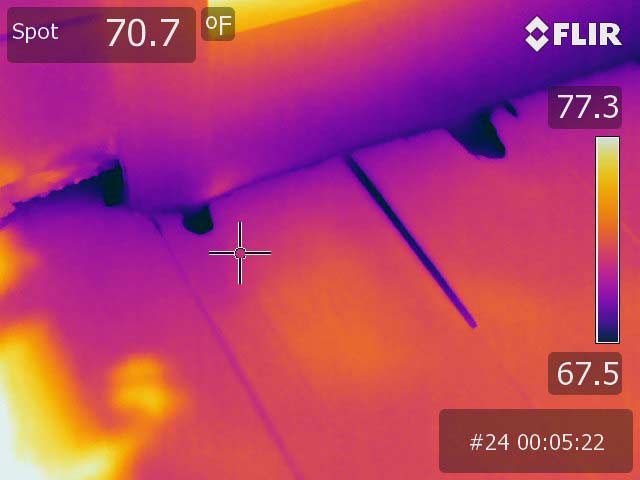Infrared Thermography in Building Leak Detection and Diagnostics
Infrared thermography is a non-invasive diagnostic technique used in building diagnostics to detect and visualize temperature variations on the surface of structures. It employs infrared cameras to capture the thermal radiation emitted by building components, allowing for the identification of issues that are not visible to the naked eye.

How Infrared Thermography in Building Diagnostics Works
Every object emits infrared radiation based on its temperature, and infrared cameras can detect this radiation. When used in building diagnostics, thermographic images (or thermal images) are taken, showing temperature differences across surfaces. These temperature patterns can indicate various building issues.
Applications in Las Vegas Building Diagnostics
1. Infrared thermography can detect areas where insulation is missing or compromised by showing heat loss in colder temperatures or heat gain in hotter climates. Poorly insulated areas will appear cooler (in winter) or warmer (in summer) compared to surrounding areas.
2. Wet materials retain heat differently than dry ones, so Infrared thermography can help identify areas with water leaks, dampness, or mold growth.
3. Infrared thermography can reveal places where air may be leaking, such as around windows, doors, or joints in the building envelope. This is particularly useful for energy audits.
4. Overheating components in electrical systems, like circuits or wiring, can be detected with thermography before they fail, helping prevent fires or system breakdowns.
5. Infrared thermography can be used to detect thermal bridging, where heat is conducted through elements like steel beams or concrete walls, and to identify cracks or voids in the building materials.
6. Water infiltration beneath roofing materials can be identified with infrared, showing cooler spots where moisture is present under the roof surface.
Benefits of Infrared Thermography Here in Las Vegas
Infrared thermography is Non-invasive: No need to dismantle or destroy any part of the building.
Thermography is Efficient: Large areas of a building can be inspected quickly.
Early Detection: Problems like heat loss or moisture intrusion can be spotted before they cause more significant damage.
Infrared thermography is Cost-Effective: It helps identify the specific locations of issues, reducing the cost of repairs and improving the accuracy of maintenance.
By detecting anomalies that point to underlying problems, infrared thermography is a critical tool in building diagnostics, improving energy efficiency, safety, and overall building performance.
